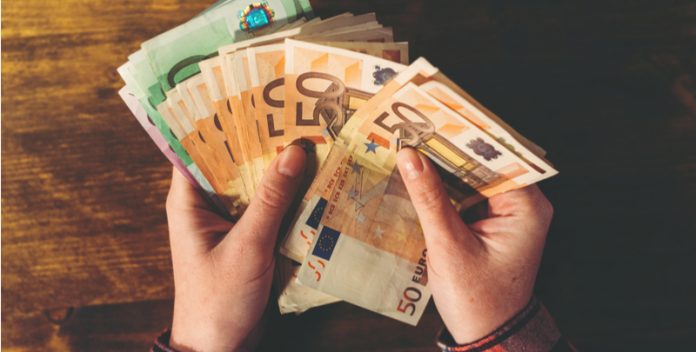The euro U.S. dollar exchange rate rallied to a 10-month high for the euro after the tone of the European Central Bank (ECB) boosted the it. Whereas, at the same time, delays over the healthcare bill in Washington weighed on the dollar. The exchange rate rallied to $1.1420, a level last seen prior to the U.S Presidential election.
| What do these figures mean? |
|---|
|
When measuring the value of a pair of currencies, one set equals 1 unit and the other shows the current equivalent. As the market moves, the amount will vary from minute to minute. For example, it could be written: 1 EUR = 1.12829 USD Here, €1 is equivalent to approximately $1.13. This specifically measures the euro’s worth against the dollar. If the U.S. dollar amount increases in this pairing, it’s positive for the euro. Or, if you were looking at it the other way around: 1 USD = 0.88789 EUR In this example, $1 is equivalent to approximately €0.89. This measures the U.S. dollar’s worth versus the euro. If the euro number gets larger, it’s good news for the dollar. |
The euro surged early on Tuesday after a speech by ECB President, Mario Draghi. Draghi pointed to the eurozone economy growing for 16 consecutive quarters, an economy that was in a strengthening and broadening recovery. Draghi also referenced low inflation across the bloc as the reason why the ECB had kept monetary policy so accommodative. Most importantly for the market, Draghi subtly changed his language by calling for “considerable” instead of “very substantial” degree of stimulus.
This was a very minor change in Draghi’s tone, but more than sufficient to impact the euro. Hopes are increasing that the ECB is coming close to starting the process of removing its economic stimulus package, which could end in an interest rate rise. The expectation of a tighter monetary policy in the eurozone pushed the common currency northwards.
| Why do raised interest rates boost a currency’s value? |
|---|
| Interest rates are key to understanding exchange rate movements. Those who have large sums of money to invest want the highest return on their investments. Higher interest rate environments tend to offer higher yields. So, if the interest rate or at least the interest rate expectation of a country is relatively higher compared to another, then it attracts more foreign capital investment. Large corporations and investors need local currency to invest. More local currency used then boosts the demand of that currency, pushing the value higher. |
Draghi will be speaking once more this afternoon at the ECB Central Bankers Forum. Given the sensitivity of the euro to Draghi’s comments, there’s plenty of room for disappointment – but as long as he continues with the same tone, then the euro rally could take a step higher.
U.S. healthcare bill delayed
The dollar weakened broadly following a delay in the healthcare bill vote in the U.S. Senate. The vote has been stalled after several republicans have confirmed they won’t vote for the bill in its current form as a replacement to Obamacare. The problem for the dollar isn’t the healthcare bill itself, but more what this hold-up says about Trump’s potential for pushing other policies through the U.S. Senate such as tax reforms and infrastructure spending projects. These other policies are considered positive for the dollar, and any perceived delay will pull the dollar lower, which is what happened on Tuesday.
| How would Trump’s policies boost the U.S. dollar? |
|---|
| A sizeable corporation tax cut would see a flood of money repatriated to the USA which would then create a high demand for the currency and, in turn, increase its value versus other currencies. Infrastructure spending in a country already close to full employment would also push wages higher, leading to more spending and thus boosting inflation. Higher inflation leads to higher interest rates and a higher demand for the currency. |
Today there is little influential economic data for the U.S. Pending home sales could attract some attention, although most investors will be looking ahead to the final release of GDP data for the first quarter on Thursday.
|
This article was initially published on TransferWise.com from the same author. The content at Currency Live is the sole opinion of the authors and in no way reflects the views of TransferWise Inc. |





